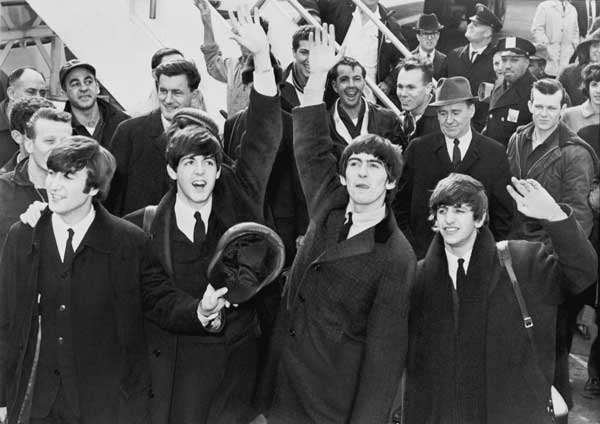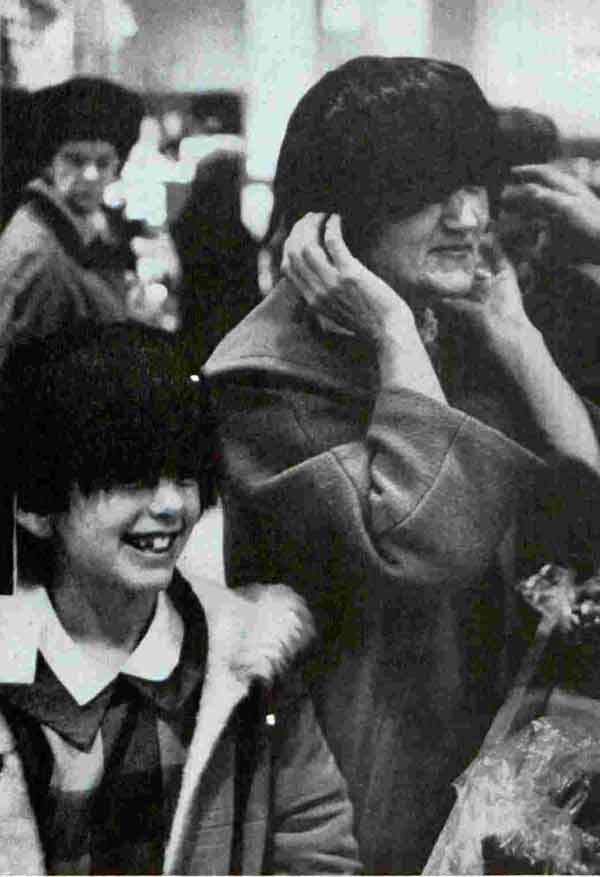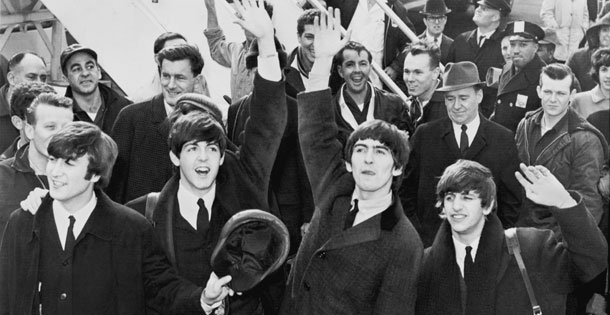
When the Beatles arrived in America 50 years ago, the media headlined stories of the 4,000 screaming fans who greeted them at Kennedy airport. In the back pages of newspapers and in television commentary, however, there were less welcoming sounds. Even before their controversial statements of later years, the Beatles had earned a sizeable crowd of angry critics.
David Susskind, a popular talk-show host, called them “the most repulsive group of men I’ve ever seen.” Newsweek’s music critic pronounced them “a near disaster.” They were “not merely awful,” sniffed William F. Buckley, but “so unbelievably horrible, so appallingly unmusical…that they qualify as the crowned heads of anti-music.”
Journalist Paul Johnson didn’t reserve his disgust for the four lads, but poured it generously over their fans. He wrote, “What a bottomless chasm of vacuity they reveal!…Those who flock round the Beatles…the least fortunate of their generation: the dull, the idle, the failures.”
To be fair, these critics had seen decades of pop stars flash across the cultural firmament and fade into obscurity. They had watched successive waves of teen-age hysteria stirred by Rudolph Valentino, Rudy Vallee, Benny Goodman, Frank Sinatra, and, most recently, Elvis Presley. The Beatle-haters didn’t like him, either.
The whole concept of rock ‘n’ roll was still too new to be taken seriously by many adults. They dismissed it as crude and gimmicky, relying on what one record company executive described it as “the dumb sound.” He explained that term to the Post’s pop-music reporter, Aaron Aronowitz, in 1963. The pop hits of that year, he said, all featured a “teenage sound…that lets a kid identify with a record because it sounds like himself. It doesn’t have that technical, glib, heartless perfection of older music.”
The unusual sound was the chief sales gimmick of a rock ‘n’ roll hit, according to Dick Clark, the host of ABC-TVs American Bandstand. He told Aronowitz, “The more different, the more original, the more unique the sound is, the more chance a record stands of becoming a hit.”

It didn’t hurt that much of the new sound was “regarded by parents as nothing more than noise,” Aronowitz noted. “The sounds of popular music are not designed for the parents, they are designed for the kids.” And in 1963, these “kids,” identified by Billboard magazine as mostly 14-to 15-year-old girls, were responsible for $161 million in records sales.
And all this money went to kids who had gained success without the years of hard work that parents said were necessary. The teen idols just seemed to have strolled into fame.
Aronowitz offered the example of a young Eva Boyd, who’d been hired for babysitting by Carole King and Gerald Goffin. After hearing her singing around their apartment, they wrote a song for her: “The Loco-Motion.” Shortly afterward, Boyd walked into a studio, recorded the number, and soon became the country’s top recording artist known as “Little Eva.”
Her sudden stardom was not unusual, Aronowitz noted. Until “The Twist” made him a household name, Chubby Checker “used to pluck chickens in a poultry market.” Dion DiMucci (“Runaround Sue,” “The Wanderer”) was a door-to-door magazine salesman.
Peggy Marsh was a 14-year-old girl who sang at weddings. When a secretary at RCA Victor mistakenly heard she was an orphan, she fought to get Marsh an audition with the company’s top executives. Soon, “Little Peggy” Marsh recorded her big hit, “I Will Follow Him,” which remained number one on the charts for five weeks and brought her record contracts and television appearances.
One of the classic fairy tales of the young rock ‘n’ roll industry was Fabian. “An aspiring manager…discovered him sulking on a South Philadelphia stoop,” Aronowitz wrote. “‘Can you sing?’ the manager asked. ‘No,’ Fabian replied. ‘That’s all right,’ said the manager, ‘You look like a singer,’ and a singer is what Fabian became. As an appendix to the legend, Fabian has since graduated from the pop-record business to become a movie star, proving that even fairy tales have fairy tales.”
The Beatles had everything that annoyed critics of rock ‘n’ roll: an unusual sound and seemingly unearned fame, not to mention the gimmick of their long hair. But the rock group introduced a troubling new factor: a fanatical following of devoted teen fans, who gathered in larger numbers and with greater hysteria than anything seen before. It appeared that rock stars might soon have more influence over America’s youth than the adult artists who critics admired. While they were quite wrong about the lasting quality of the Beatles’ music, on this point, the critics were right.
Become a Saturday Evening Post member and enjoy unlimited access. Subscribe now




Comments
Along with the Kennedy stories (well done!) the Beatles’ anniversary really brings on such a feeling of longing for the “old days” now that I am old.
Thank you for your thoughtful approach to sharing our country’s history with your readers!